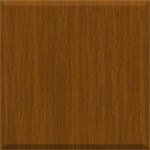
The Animals

Fr. Peter pretending he knows something about ranch animals.

Pictured above are some of our original ewe-sheep, the female hembras borregas of
our flock. The children named the Churros “Bella,” “Cotton Candy,” “Lola,” and
“Angel.” The white ewe in the forefront is the only non-Churro. We call her “Daisy”
and appreciate the stocky offspring she delivers every year. The sheep are shy and
keep to themselves, but learn the customs of the ranch and follow the directions of
their caretakers.


Below you cansee our new, 2025 flock ready for action. Our Navajo Churro
supplier/curator has designated St. Edwin as one of the ranches capable of
maintaining the gene pool of this variety of sheep originating from Spain. To date
they have been sweet and docile animals. We look forward to the many lambs they
wull bring us. Now we are looking for a miniature donkey. We need to replenish the
chickens and goats, too.


South Valley inhabitants are no strangers to ranching. The parish property itself
was once a ranch. The various animals we keep on our property provide character,
fun, and community participation in our parish. Right now we have sheep and goats;
parishioners would like a few chickens. Above are our shed-stables.





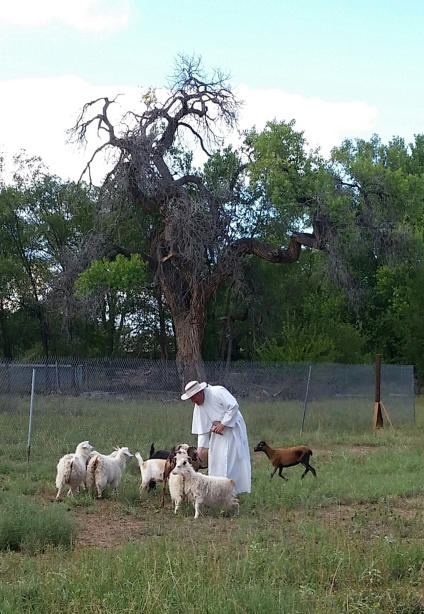
Pictured above are some of
our original ewe-sheep, the
female hembras borregas of
our flock. The children named
the Churros “Bella,” “Cotton
Candy,” “Lola,” and
“Angel.” The white ewe in
the forefront is the only non-
Churro. We call her “Daisy”
and appreciate the stocky
offspring she delivers every
year. The sheep are shy and
keep to themselves, but learn
the customs of the ranch and
follow the directions of their
caretakers.
Fr. Peter rewarding the goats
with sweet grain after a
successful photo-op.
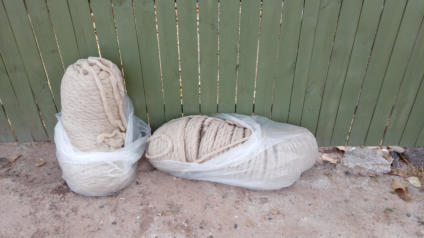
In April of 2018 we sheered our
sheep for the first time. They
seem to like it, running around
afterwards like children with
new sneakers. We brought their
fleece to New Mexico’s Mora
Valley Wool Mill, the largest
wool processing plant west of the
Mississipi. Above are bags of
“roving,” the scoured, carded,
and combed wool. By now it has
been spun and is available in our
parish store.

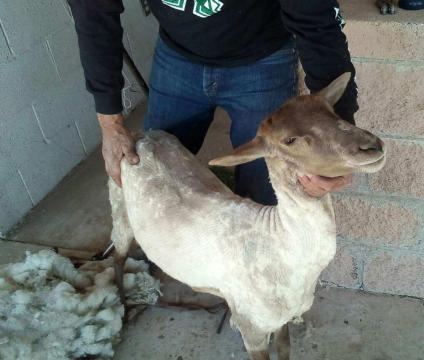
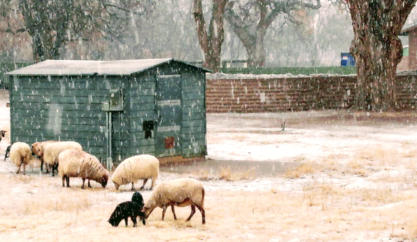
Livestock


Below you cansee our new, 2025 flock ready for action. Our Navajo Churro
supplier/curator has designated St. Edwin as one of the ranches capable of
maintaining the gene pool of this variety of sheep originating from Spain. To date
they have been sweet and docile animals. We look forward to the many lambs they
wull bring us. Now we are looking for a miniature donkey. We need to replenish the
chickens and goats, too.


South Valley inhabitants are no strangers to ranching. The parish property itself
was once a ranch. The various animals we keep on our property provide character,
fun, and community participation in our parish. Right now we have sheep and goats;
parishioners would like a few chickens. Above are our shed-stables.
